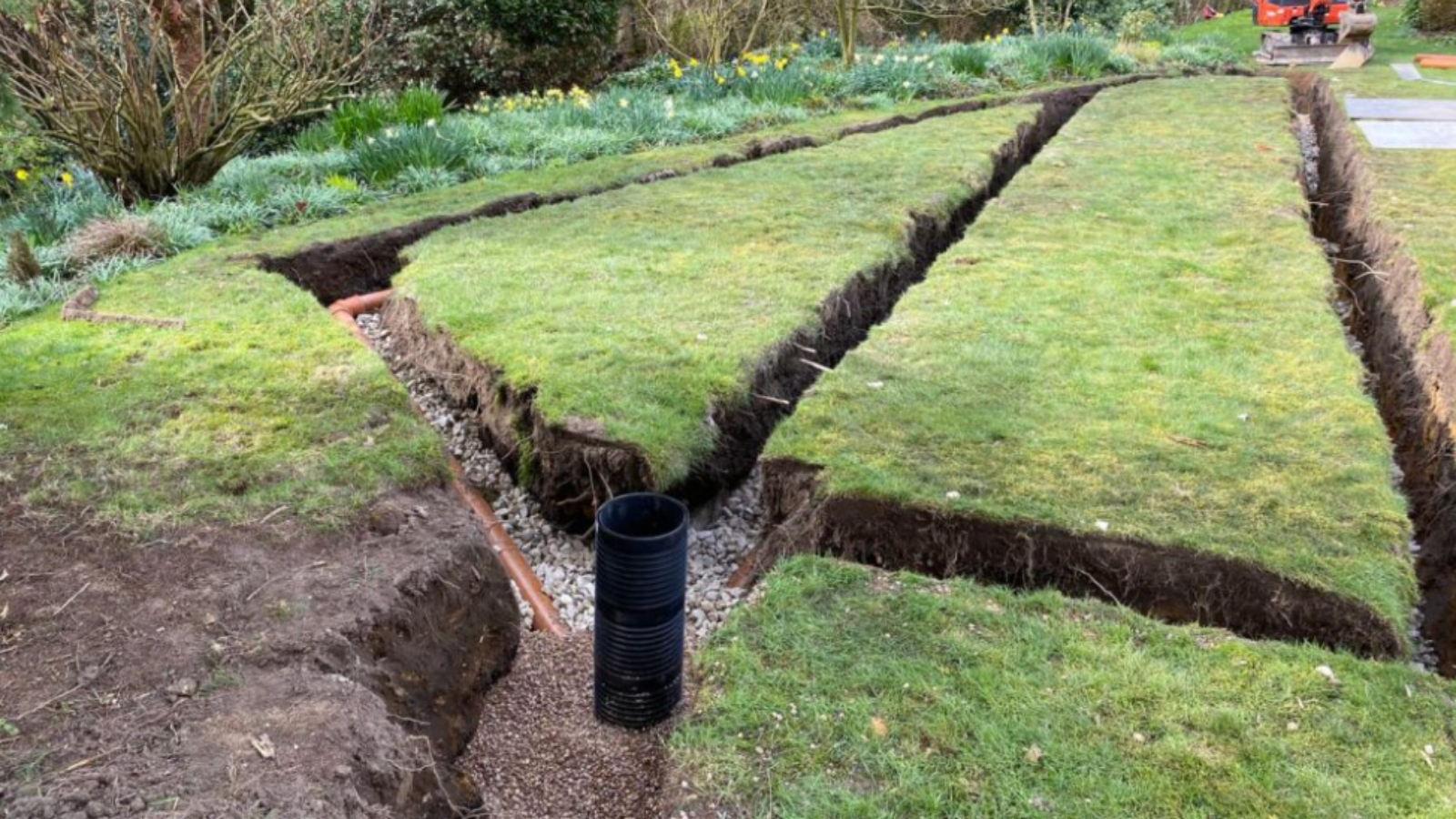What is a drainage field and how is it different to a soakaway?
The two drainage systems operate in a similar way but there are fundamental differences

Drainage fields and soakaways are different types of drainage systems that fulfil different household roles.
Drainage fields are used in conjunction with septic tanks to tackle household waste discharge. They are often incorrectly referred to as ‘soakaways’, which are different and instead are used to deal with surface water – for example, rainwater runoff from roofs.
Both are becoming more important as the number of people living off mains drainage is increasing.
What is a drainage field?
A drainage field or drainage mound allows liquid runoff from sewage to dissipate back into the ground.
They are typically created by digging trenches that are filled with perforated piping and shingle and connecting to a septic tank or sewage treatment plant. This ensures any liquid runoff from the septic tank or sewage treatment plant does not flow directly into any watercourses.
"The way drainage fields work is through a system of sub surface irrigation pipes and gravel which allows the effluent to percolate into the surrounding soil. Biological treatment takes place naturally in the aerated layers of soil," drainage experts at Yorkshire Septics explain.
The choice and design of your drainage field will be determined by the amount of space available and by porosity or percolation tests. These tests will establish how quickly water can dissipate and the best location for your drainage field.
Do you need planning permission for a drainage field?
Planning permission is required before adding a drainage field to your property, as well as being needed before adding a septic tank or sewage treatment plant too.
In the UK, a septic tank needs to be located five metres from a boundary as well as needing to be five metres from any trees and hedges, regardless of where your property boundary is.
Septic tanks generally are not the favoured off mains drainage solution for off-grid homes so it is worth doing your research before submitting an application.
The only exception might be if replacing an existing septic tank and drainage field with "like for like". But it is always worth checking with your local council before going ahead.
Do I need to comply with building regulations too?
If you plan to add a drainage field to your project, you also need to make sure your siting and drainage field design complies with Part H of the Building Regulations.
These state that drainage fields must be sited in a well drainage and well aerated area of subsoil with a good area of percolation. They also state that the design:
- Drainage fields or mounds should be designed and constructed to ensure aerobic contact between the liquid effluent and the subsoil
- Drainage fields should be constructed using perforated pipe laid in trenches of a uniform gradient which should not be steeper than 1:200
- Pipes should be laid on a 300mm layer of clean shingle or broken stone grade between 20mm and 50mm
- Trenches should be filled to a level 50mm above the pipe and covered with a layer of geotextile to prevent entry of silt. The remainder of the trench should be filled with soil, the distribution of the pipes should be laid at a depth of 500mm below the surface
- Drainage trenches should be from 300mm to 900mm wide with areas of undisturbed ground 2m wide being maintained between parallel trenches
- An inspection chamber should be installed between the septic tank and the drainage field
- Drainage fields should be set out as a continuous loop fed from the inspection chamber
How much does a drainage field cost?
Yorkshire Septics says drainage fields cost between £3,000 and £5,000 to install. It can take a week for the actual physical work to be completed but this does not include the time it might take for planning permission to be submitted and approved.
How do drainage fields differ from soakaways?
Both soakaways and drainage fields deal with liquid runoff, but there is a stark difference between the two in terms of what kind of liquid runoff they each help dissipate into the ground.
Soakaways can be an ideal drainage solution to deal with rainfall that doesn't naturally drain from your property. A soakaway is basically a pit in the ground filled with soakaway crates into which flows rainwater drainage. This is essentially achieved by giving water extra surface area (through the use of stacked crates inside a hole) to seep back into the ground. Soakaways can prevent flooding and therefore stop any potential damage to a house and its foundations, but are not used to tackle sewage.
A drainage field meanwhile is designed to deal with liquid runoff from sewage rather than any surface water from rainfall.
If you are looking at your off mains drainage options, take a look at more of our drainage content including how to build a soakaway, do you need planning permission for a septic tank as well as installing a French drain
Get the Homebuilding & Renovating Newsletter
Bring your dream home to life with expert advice, how to guides and design inspiration. Sign up for our newsletter and get two free tickets to a Homebuilding & Renovating Show near you.
Sam is based in Coventry and has been a news reporter for nearly 20 years. His work has featured in the Mirror, The Sun, MailOnline, the Independent, and news outlets throughout the world. As a copywriter, he has written for clients as diverse as Saint-Gobain, Michelin, Halfords Autocentre, Great British Heating, and Irwin Industrial Tools. During the pandemic, he converted a van into a mini-camper and is currently planning to convert his shed into an office and Star Wars shrine.

